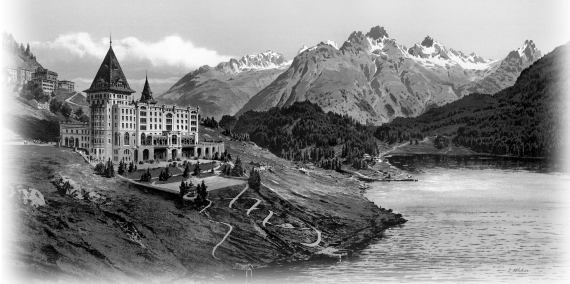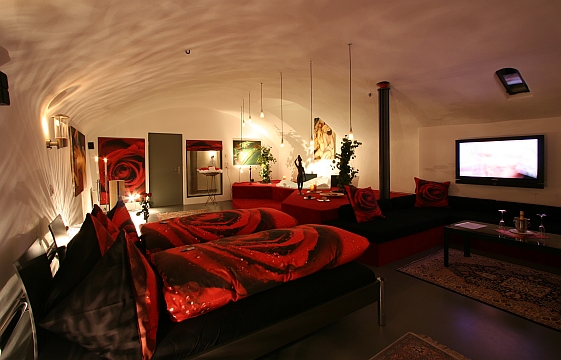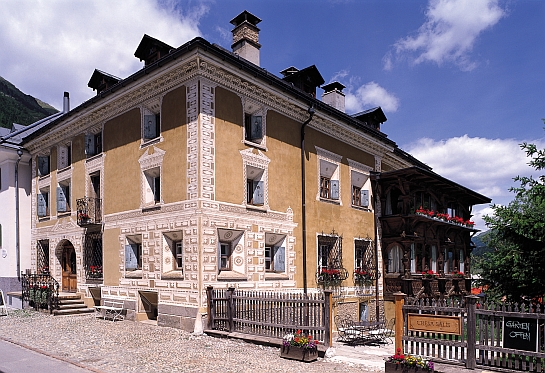Historic Hotels of Europe battle many challenges
 |
|
| A world famous historical hotel and member of Historic Hotels of Europe: The Badrutt''s Palace in St. Moritz. |
Saint Moritz/Sils (April 29, 2011). Groupings of the Historic Hotels of Europe (HHE) are represented in 22 countries. They enable to their guests to dive into submerged worlds or at least, to stay in a historical construction. Not all are "castle hotels and mansions", as characterised by the resident Austrian consortium. In other countries, potentially converted industrial cathedrals are to be found – or old residential houses and castles. Characterising the image of the venerable grand hotels remains to be represented as with the Swiss Waldhaus Sils. Nevertheless, with the first HHE Congress in the Waldhaus, there was also much to hear regarding the great challenges to small and medium-sized private hotels.
"For us, large is good. Otherwise, it could not carry such a large family", noted Urs Kienberger, who directs and owns the 140-room large Waldhaus Sils near Saint Moritz together with the family of his brother-in-law, Felix Dietrich with his many children. However, Kienberger has absolute respect for the many "small hoteliers" who were staying with him as guests: "They create a perfection in the details that, unfortunately, we could never reach."
Lydia Nemetz from Austria, among others, had travelled to Saint Moritz. In her mighty Castle Oberranna, there is a place for just 13 guest-rooms. The castle hotel operates on the Wachau borders in the face of growing demand in antiquarianism. "Our goal must be to bring the running costs in line", Nemetz formulates the motto for many of the participant private hoteliers. Without additional sources of income, there is no survival. The reward to a typical castle owner increases with the value of the real estate that can be snatched away, however, by predatory knights.
Banks penalise small hoteliers
This can also appear in the form of bankers. So lament Sibylla and Jürg Degiacomi of the Chesa Salis in Bever near Saint Moritz with their country house that offers only a handful of rooms in addition to a gourmet restaurant, who are on step nine of the ten-part loan ranking by the banks: "They will happily grant us a loan with these rotten conditions even though up to now, we have paid back every franc".
 |
|
| Small but elegant: Rose Suite at the Hotel Baeren in Duerrenroth, Switzerland. |
Many of the often blue-blooded hoteliers have inherited their "old-timers with beds"; others have purchased them to realise their life´s dream.
In the east of Europe, a special type of Historic Hoteliers can be found: They have been granted or bought back their former manorial family seats. Kay Wettstein of Westersheimb, Swiss architectural journalist, has thus woken Kastel Pechy in the East Slovak Hermanovce to life once again. "A Project in the Progress" that is partially directed from Zurich. "To hold the fixed costs within the scope of it, I remove all that is possible", she says. Cooks, cleaning staff – all of whom are only engaged if six rooms are booked.
Their clientele may be regarded as typical to many of the operations: On the one hand, the historical ambience on the regional level is utilised with pleasure for weddings, on the other hand, these are often the people arriving from overseas who proceed to the former native country of their families. "Heritage Travel will be increasingly more important in the east of Europe, just as, for instance with the Salzkammergut" says Maximilian Eidlhuber, President of the Castle Hotels and Mansions, from Salzburg also looking after member operations in "former crowned states" like Croatia and Hungary.
Austria and France shaped the HHE
Together with his French counterpart, Châteaux & Hôtels de France ( today, the Châteaux & Hôtels Collection Group), the Austrian organisation, Schlosshotels & Herrenhaeuser, initiated the foundation of the „European Federation of Traditional Accommodation and Historic Houses“ („Europäische Vereinigung traditioneller Beherbergungsbetriebe“) which was officially brought to life as a French association in 1998. The umbrella organisation chose the more useful name "Historic Hotels of Europe" some years later. Up to now and alongside the Culinary Chef, Alain Ducasse from France, presidents from Italy, Ireland, Austria and Sweden have directed the group.
 |
|
| Run by a passionate family: Chesa Salis in Bever close to St. Moritz. |
With an annual budget of only 100,000 Euros and in spite of 650 member hotels, the HHE has no power. So, differently from the Romantik Hotels, there is also no thick hotel book. Almost the entire financial forces were put toward the electronic presence on the website HistoricHotelsofEurope.com. Every member must provide links to HHE within each correspondence.
Urs Kienberger who also stands in competition with luxury hoteliers who acquire their real estate "as hobbies like racing horses", spoke to his "small" colleagues from the heart: "We bring history into the present. To survive, we must create a balancing act: As operators, make innovative changes, but as historic hoteliers, preserve the property". / Fred Fettner
April 8, 2011 A story to tell - Historic Hotels of Europe start pan-European cooperation
To print this article you have to be registered and logged in for newsletter, visitor or subscription.





